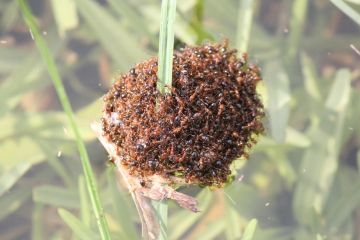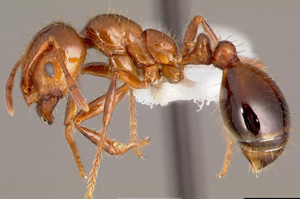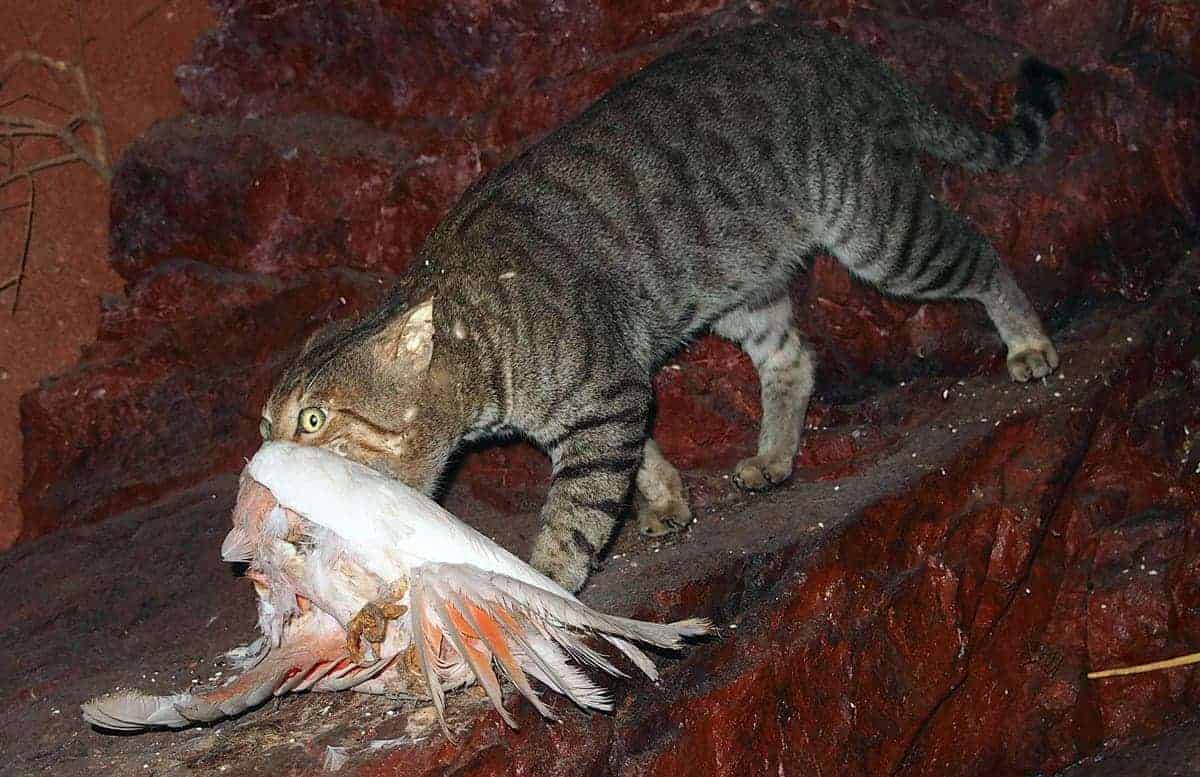
In mid-2013, Australia’s most important eradication program – its goal to eradicate red imported fire ants from south-east Queensland – changed direction.
We will get just this one chance at eradication. If it fails, the red imported fire ant will radically transform the natural environment, agriculture and our way of life. The Queensland Government has costed the impacts on Australia at $43 billion over 30 years.
Yet state, territory and the federal governments are baulking at maintaining the program, initiated in 2001. ISC is concerned that short-term financial considerations may be given higher priority than saving Australia from this damaging and costly invader.

A small but devastating ant
The red imported fire ant is a 2-6 mm long brownish or coppery ant, with a very painful sting. When disturbed, they swarm from their nest like an erupting volcano and repeatedly attack.
After the initial ‘fire’ has worn off, the stung site develops pustules and may become infected. Some people have life-threatening allergic reactions and multiple stings can kill a small child and native animals. The ants would transform natural systems, eliminating much of the native ground fauna.
The fire ant hails from central South America but is now widespread in south-eastern USA, the origin of the outbreak in Australia. A 2001 study estimated that the direct impact on just the economy of the state of Texas was $1.2 billion over one year.
The fire ant was first recorded in Australia in 2001, just before ISC formed. Tim Low, author of Feral Future and joint founder of ISC, described the ant then as the ‘nastiest of eco-villains’. If unchecked, it could cover all of our tropical north and vast areas of coastal Australia.
The ant has been eradicated from Yarwun near Gladstone and the Port of Brisbane. But the original efforts to contain the outbreak to Brisbane were unsuccessful, with a westward spread, probably in 2004, that was not discovered until 2007. The area of infestation is now an estimated 350,000 hectares, and the ant can be found at Ipswich, Logan and Redlands, with isolated pockets in the Scenic Rim, Gold Coast and Lockyer Valley.
As a result, confidence that it can be eradicated has declined.
Short-term funding only
Eradication efforts costing $15 million a year are coordinated by the Queensland Government on behalf of all states and territories on a cost-sharing basis based on population. In May 2013 national, state and territory governments were considering a five-year funding plan, with Queensland offering an additional $3 million if at least three years was approved. Minutes from the meeting of ministers noted that the national management group (an inter-governmental group that oversees Australia’s eradication programs) said:
“the failure to take a long term approach to the planning and resourcing of a significant national eradication effort was detrimental to its effectiveness.”
Instead of five years, a two year program was proposed, but WA objected to even this. Unable to achieve consensus, funding was approved for only one year.
One year’s funding will make it hard to maintain staff continuity and properly implement a long-term strategy. DAFF (the federal Department of Agriculture, Fisheries and Forestry) has assured ISC that eradication is still proceeding. But in a worrying sign, contingency plans are being drawn up to consider what would occur if the eradication was halted. It would move to a containment and management phase and we would have to live with this horrendous pest.
The new direction
The eradication program has had its critics over methods and inefficiencies. The program has been reviewed and some new directions determined.
The full extent of the outbreak found in 2007 has still to be determined. The plan is to use a low-flying helicopter mounted with a thermal imaging camera that can detect the ants to map the boundaries of the infestated area over the next two years. The mapping is not 100% reliable, but provides a good estimate. The area is too large for ground-based searches. Knowing the full extent of fire ants is critical to control efforts.
The program is run by the Biosecurity Queensland Control centre, a 130-strong unit dedicated to eradicating a number of biosecurity outbreaks, red imported fire ants being the bulk of its work.
Another change to the program is that landholders will now be allowed to use private pest controllers to destroy a nest, rather than being required to use government staff. Given the size of the outbreak and the delays in responding to reports of ant nests, this makes sense, provided that the correct methods are used and there is good reporting.
The next five years
The next five years will be critical to whether Australia is colonised by Red Imported Fire Ants. All national, state and territory governments must get fully behind this critical eradication program. The cost of failure is just too enormous to contemplate.









